What should I feed my kitten? Dry food such as biscuits or wet food? The choice isn’t always obvious when you first adopt a kitten. As experts in feline health and well-being, we've prepared some tips on how to give your two-month-old, three-month-old or four-month-old kitten the right start and healthy diet they deserve.
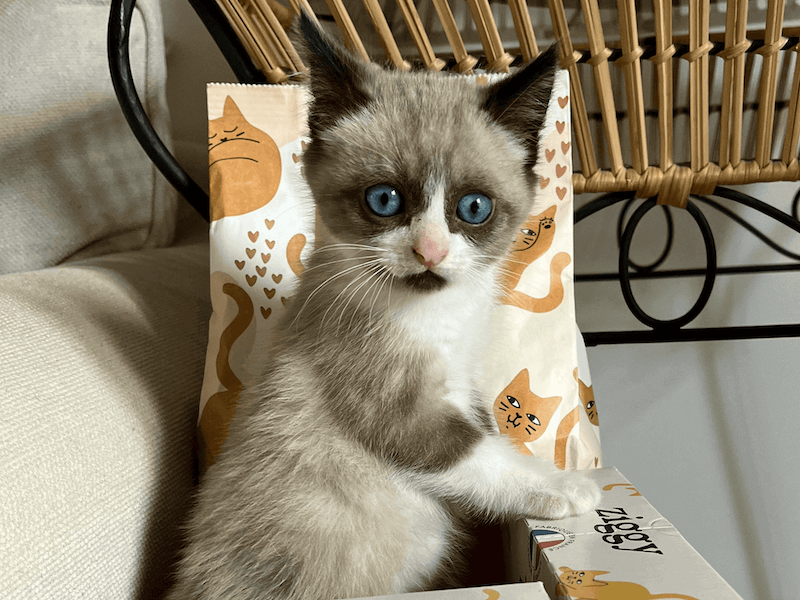
A kitten's diet is different from an adult cat’s diet. Your kitten needs a diet suited to his age and nutritional needs so he can reach his full potential and develop into a beautiful cat. But how do you choose between dry food or wet food for kittens? Should you exclusively feed him dry food or wet food? Or both? Let's break it down for you here.
Should my kitten eat dry food or wet food?
Milk and wet food if your kitten isn't yet weaned
If your kitten's under 2 months old (8 weeks), he's probably not weaned yet. For the first 6 weeks of his life, he’ll need milk to get the nutrients necessary for his development. You can, however, give him solid food from 3 weeks to complement his milk bottles.
At Ziggy, we recommend opting for complete wet food for cats that you can mix with milk specially designed for kittens. Wet food mixes well and has the advantage of being richer in water than dry food. It's an excellent source of hydration and will best meet your baby cat's needs.
Moreover, wet food is easier to taste and swallow. At this age, our baby cats don't have all their teeth yet. In kittens, the first baby teeth appear around 3 weeks. By 6 to 7 weeks, they’ll all have come through. 😺
Start with just a teaspoon of wet food per day, and from the 4th week increase it to a teaspoon per meal. As you increase the amount of wet food, you can gradually reduce the bottles to three and then to two per day.
Read all about it in our article on feeding a non-weaned kitten.
Wet food and/or dry food for a kitten from 3 to 12 months
After 3 months, your kitten can eat both wet and dry food. You can give your baby cat a mixed diet (wet food and dry food mixed in their bowl), just make sure that their daily portion mainly consists of wet food.
Dry food is practical and economical, but it's important to know that a kitten's digestive system is not yet efficient enough to digest a large amount of starch, a carb that's always found in dry food. It’s what allows dry food to hold together and have an airy and crunchy texture.
Wet food (premium + complete) has many advantages for your cat:
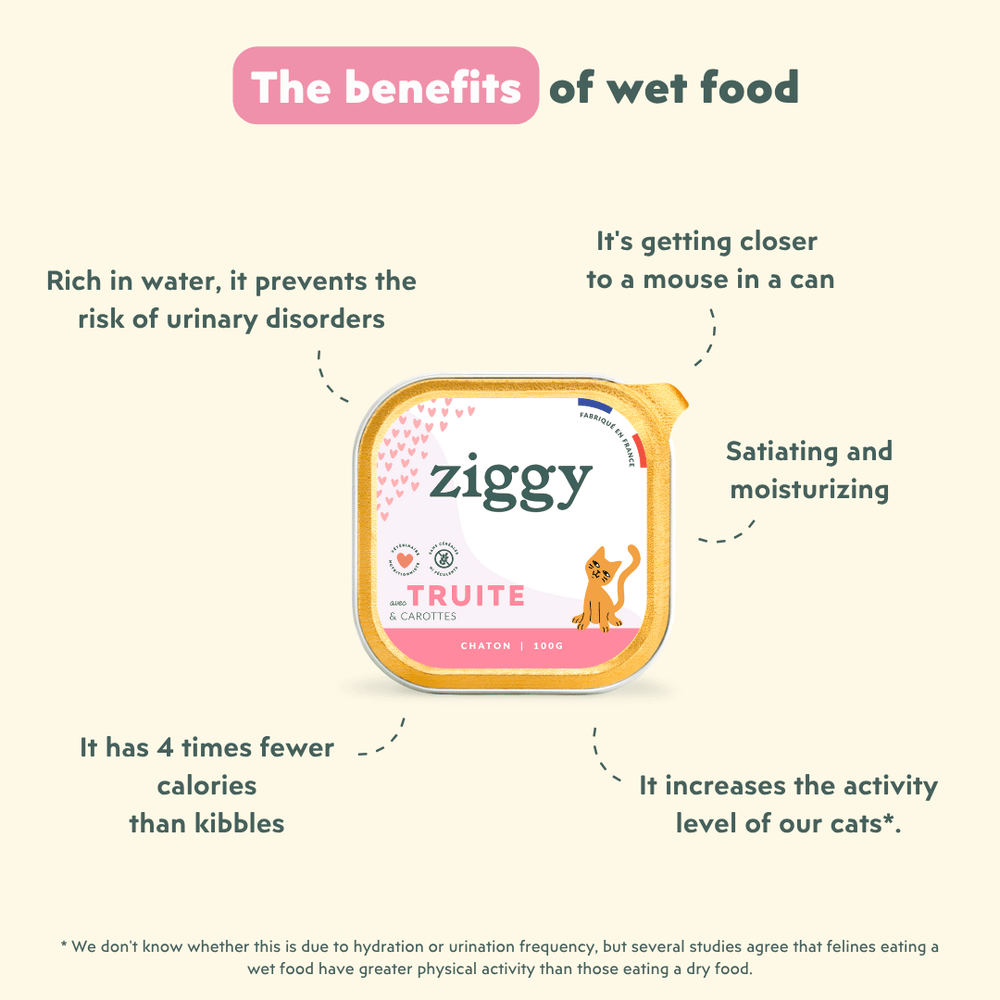
Tip: whether your kitten is two, three, four, or five months old, when you adopt him, try to continue the diet he's been accustomed to. As soon as he feels comfortable with you and his new environment, you can start a dietary transition should you wish to.
Discover all our tips and insights by downloading our guide on dietary transitions
Dry food and wet food for kittens, even after neutering!
Until he reaches 12 months, or longer for certain large cat breeds such as Maine Coons, your kitten will need a diet specifically suited to kittens, even if he's neutered.
After neutering, your little cat's energy needs drop by an average of 20%, but his nutritional needs don't change. Continue to give him dry kitten food and/or wet food, while keeping an eye on his daily portion size, especially if your little feline doesn't go outdoors.
Again, we recommend giving him mainly wet food, to ensure good hydration and keep him feeling full after each meal. A small part of his daily portion can consist of dry food, limiting this will help him avoid gaining weight.
Read all about it in our article on feeding a neutered kitten
When to switch from food for kittens to food for adult cats?
Neutering doesn't mean a kitten has necessarily reached adulthood. It's only when your kitten has completed 80 to 90% of its development - around 12 months - that you can switch him to dry food and/or wet food for neutered adult cats. Talk to your vet about when would be the right time to do so.
If he hasn't been neutered yet, you can continue feeding him kitten food for a while longer, or switch to a full adult cat diet.
Feeding a kitten with dry food and/or wet food for adult cats too early can be dangerous. In the long term, your baby cat could suffer from deficiencies, reduced growth and many other serious health issues. These include a reduced immune response when ill, neurological disorders, digestive problems, etc.
At Ziggy, our wet food and dry food for kittens has been specially designed for kittens up to 12 months, whether neutered or not.
How much food should I give my kitten?
Your kitten has a small stomach and burns off a lot of energy (after his regular naps). Providing him with several small meals throughout the day is the ideal way of keeping his energy levels topped up.
You can reduce this to 4 or 6 small portions or even leave his entire daily portion in his bowl all day, allowing him to learn to self-regulate. Of course, you’ll keep an eye on your little gourmet. 😼
Use our portion calculator to easily and accurately find out how much food to give your kitten.
We’ll determine your baby cat’s ideal portion size, whether he’s fed wet food, dry food or a mixed diet
A premium diet for your kitten
Whether you choose dry food or wet food for your kitten, make sure that you prioritize quality above anything else. There are many types of food for kittens on the market, but remember that they’re not all created equal!
Some dry food and wet food are too high in carbs and contain low-quality animal proteins (carcass scraps, cartilage, mechanically separated meat, etc.), which won’t provide your little carnivore with the nutrition they need.
Find all our tips on choosing the best dry food for your kitten and the best wet food for your cat on our blog.
Our guide on how to provide your kitten with the best care
Nutrition, care, behaviour, well-being… Find all our advice on how to take care of your kitten in our guide. And if you haven't found a name for your little fluffball, there are a few suggestions in there too. 🐱




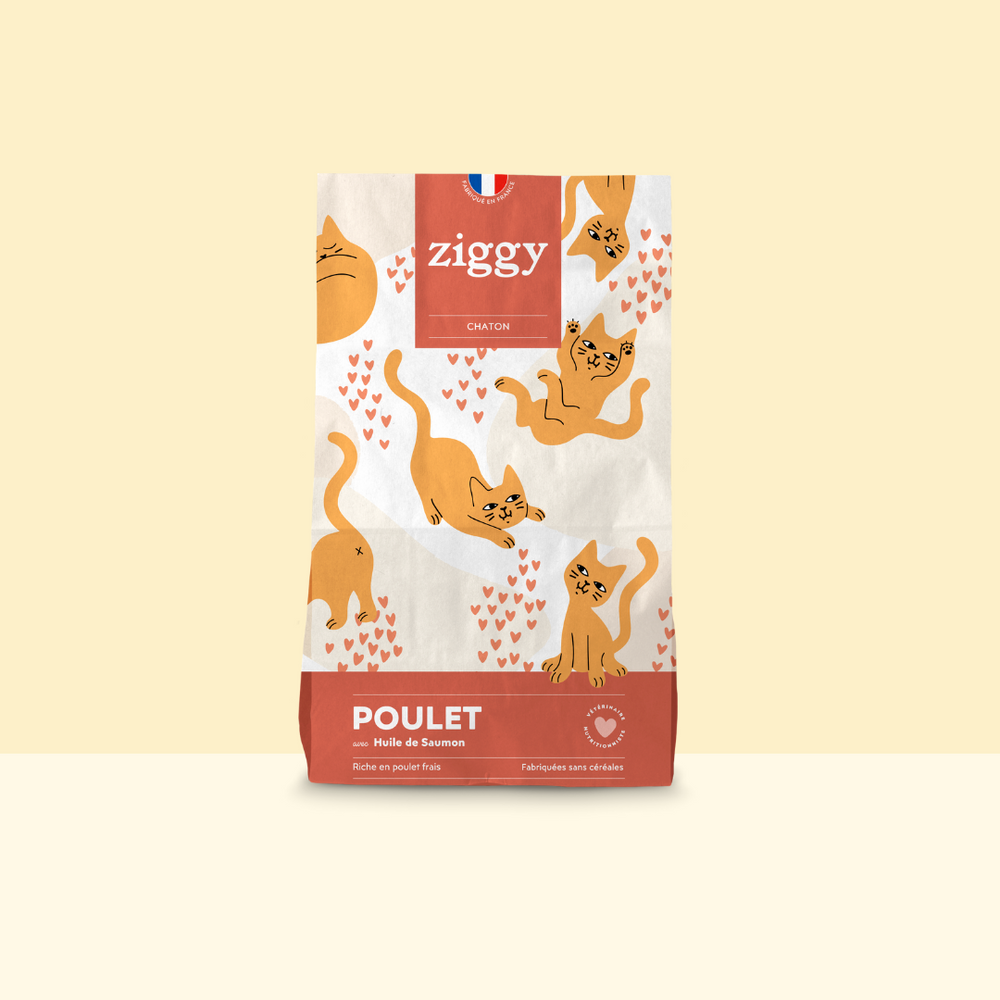
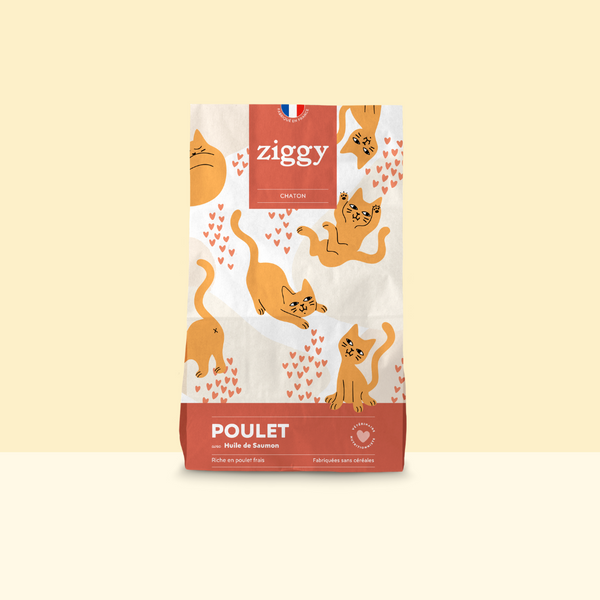





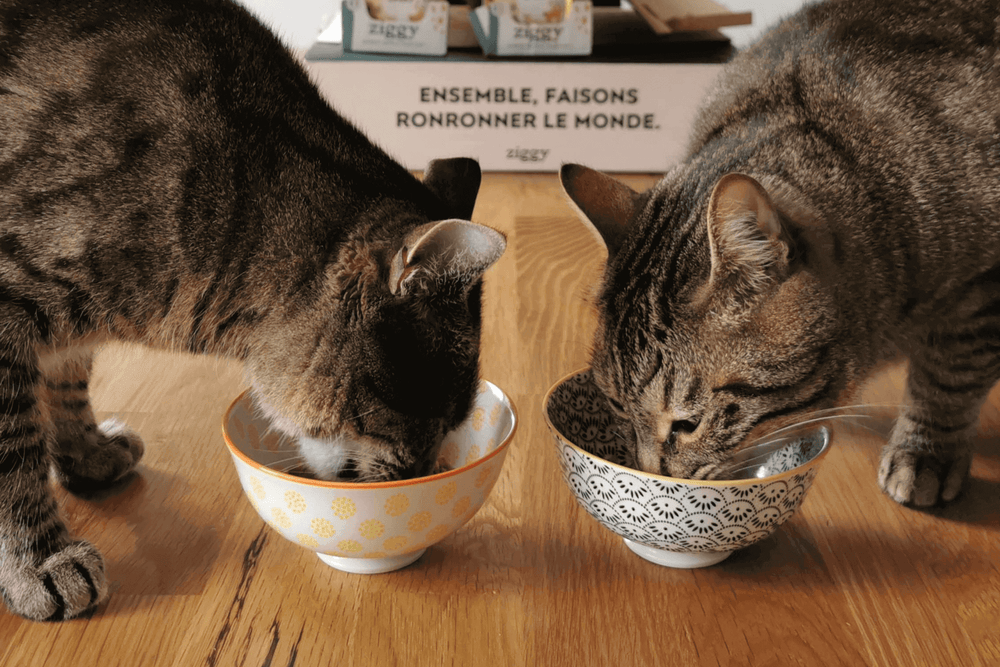
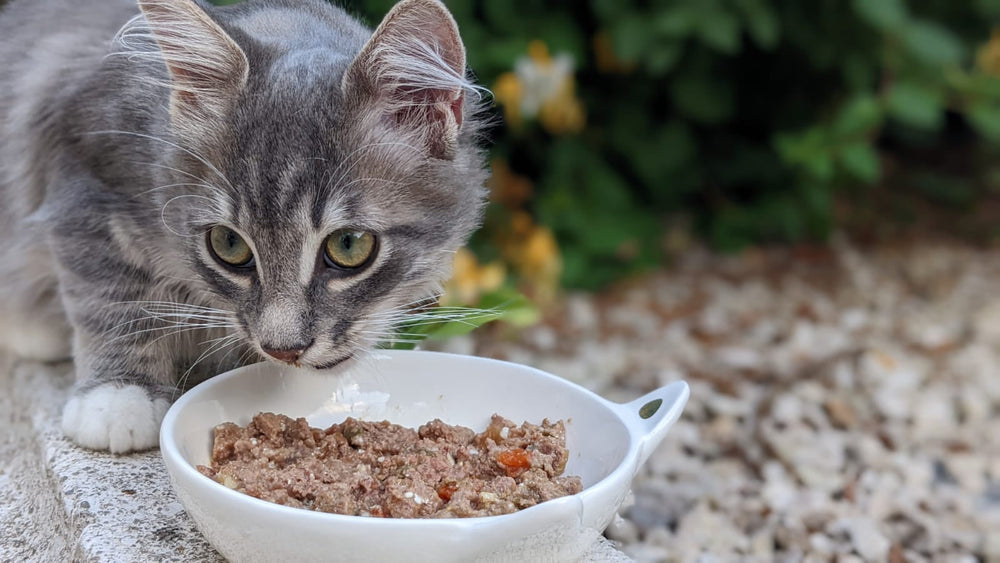
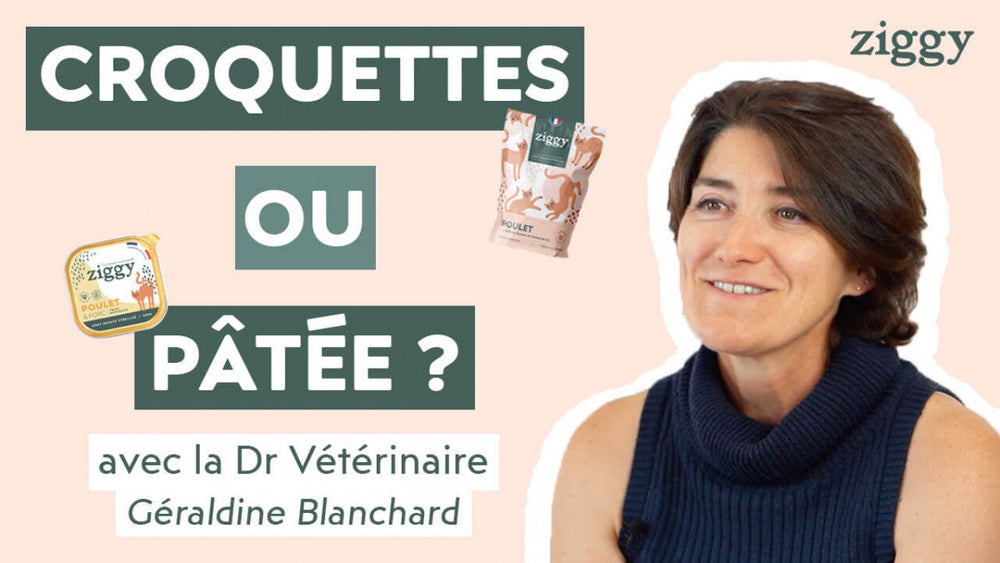
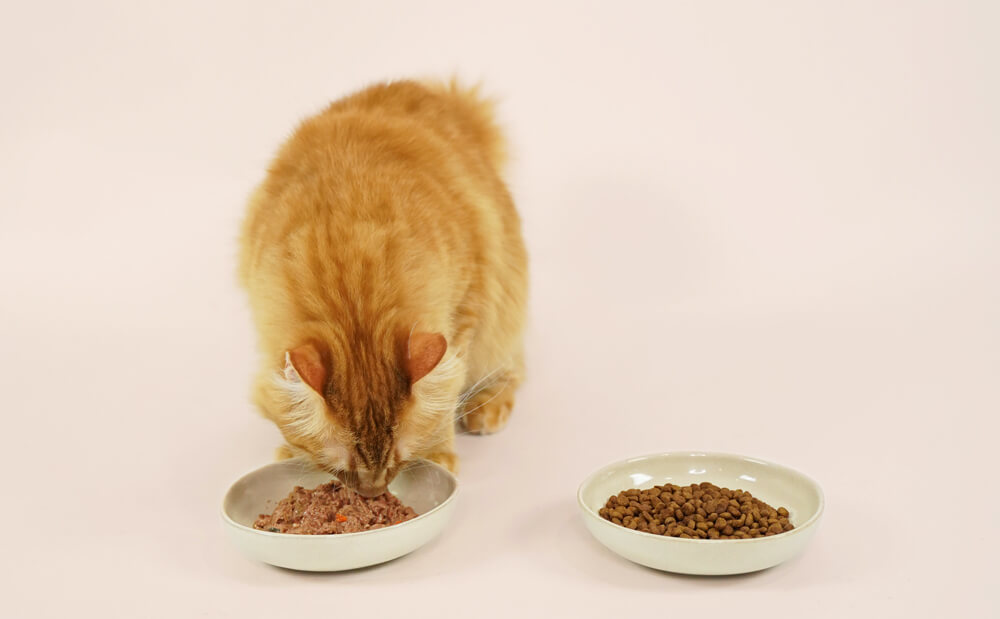
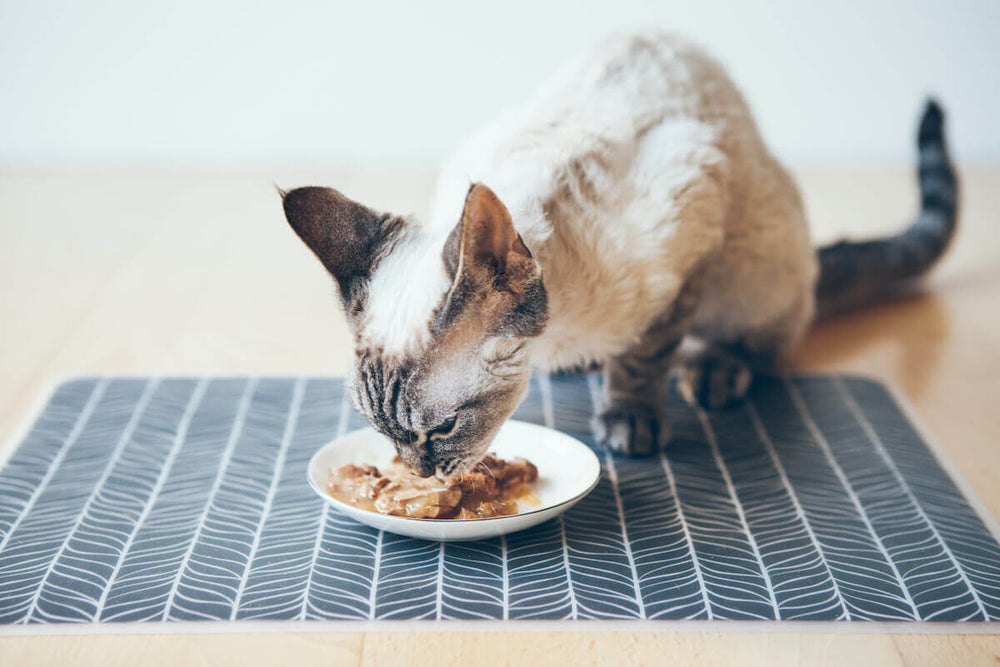
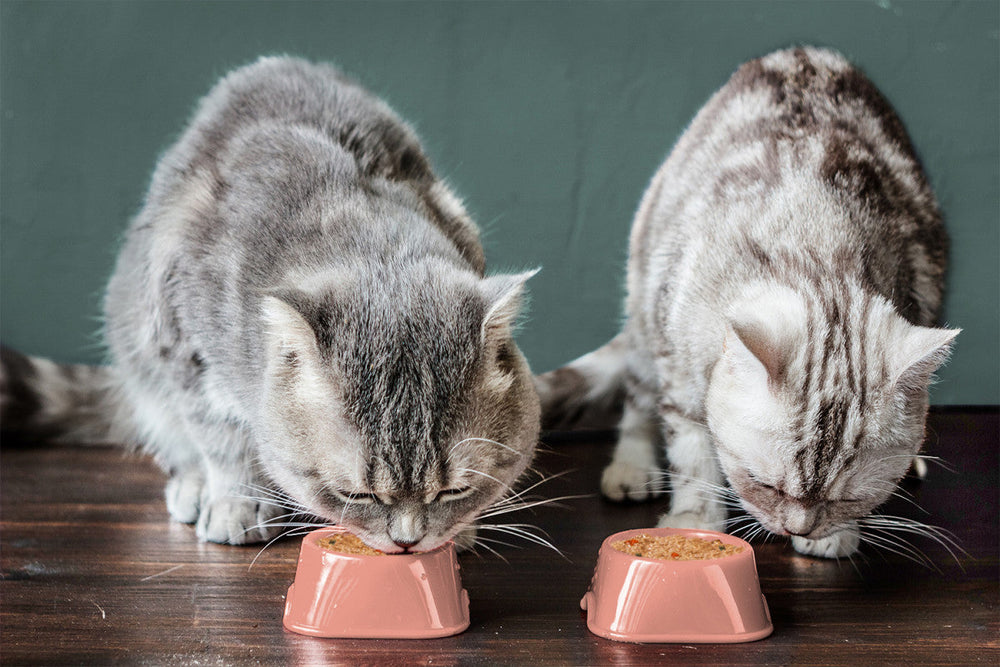


Bonjour,
Merci pour votre commentaire. 💛
On espère que votre petit chaton va très bien. 😻
L’introduction d’une nouvelle alimentation, et encore plus lorsqu’elle est saine, est longue. Cela revient un petit peu à faire adopter à nos enfants des légumes !
Il faut généralement suivre une période de transition alimentaire douce et progressive, qui consiste à ajouter peu à peu sa nouvelle alimentation à son ancienne.
Avez-vous suivi cette période de transition ?
N’hésitez pas à nous contacter à hello@ziggyfamily.com afin que l’on puisse vous donner des conseils personnalisés. Émilie et Xinaïs seront ravies de vous aider. 😽
L’équipe Ziggy
Bonjour, j’ai reçu le coffret découverte pour mon chaton de 4 mois.
Malheureusement, elle a boudé la pâtée au boeuf.
Avez-vous de la pâtée poir chaton au poulet ?
Leave a comment